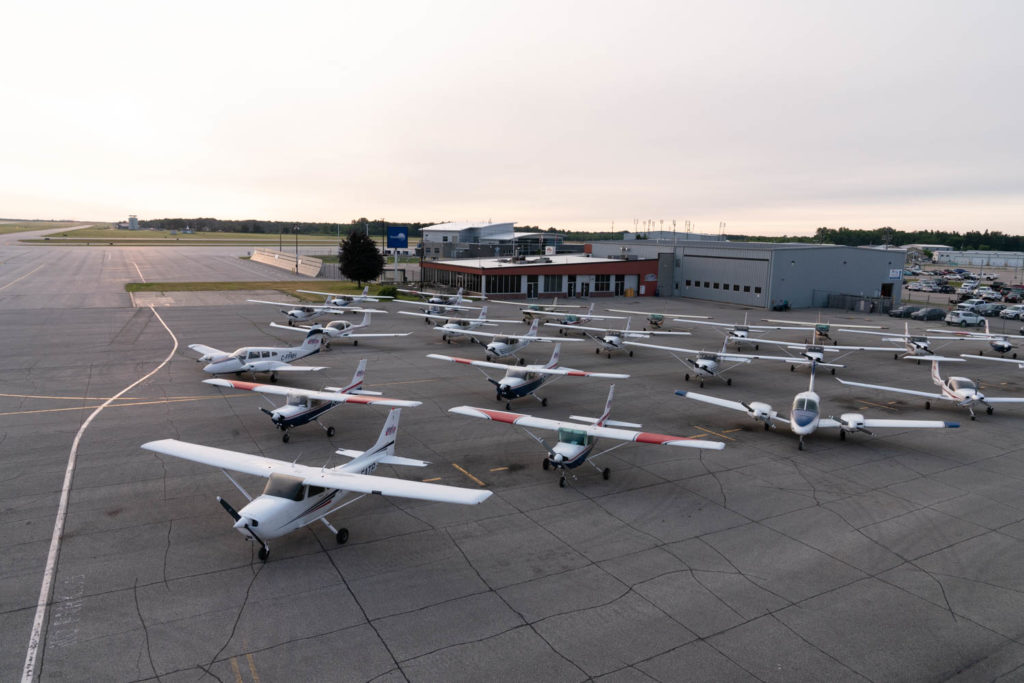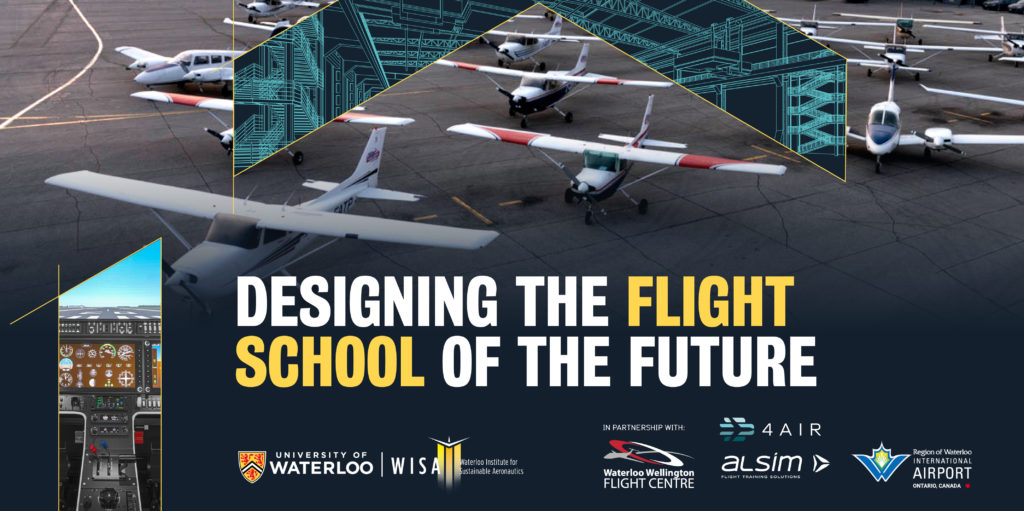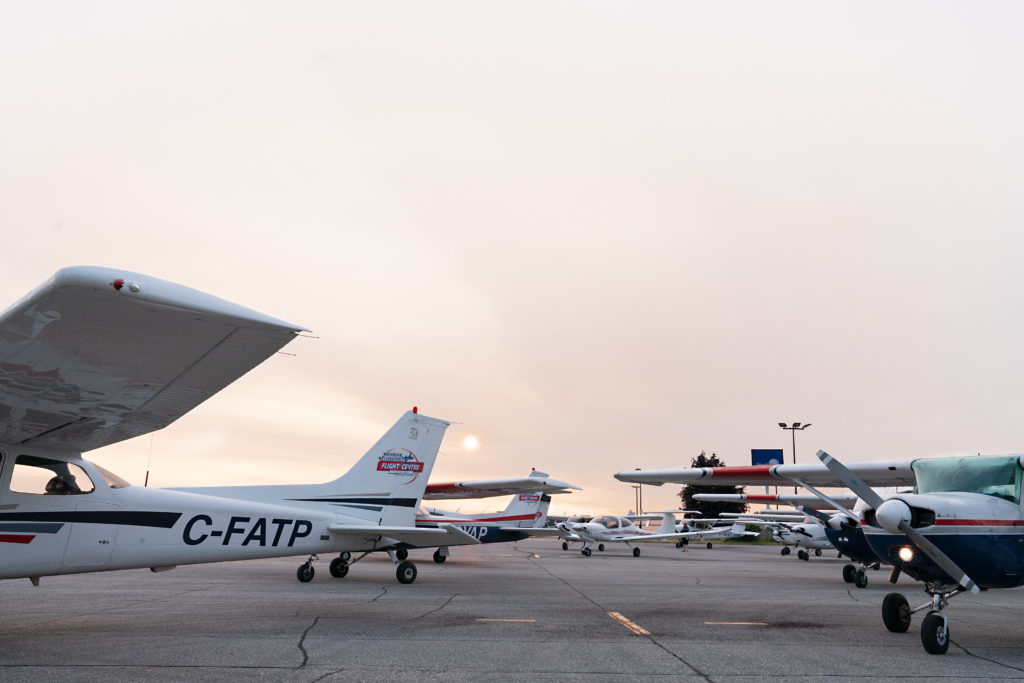Estimated reading time 11 minutes, 11 seconds.
In the fall of 2021, the University of Waterloo (UW) announced the launch of a new research institute called the Waterloo Institute for Sustainable Aeronautics (WISA), “a hub for sustainable aviation and aerospace research, technology, and education.”
The Waterloo-based initiative kicked off its Design Competition, “Designing the Flight School of the Future,” on Jan. 17, 2022. Six teams of students were tasked with reimagining the Waterloo Wellington Flight Centre (WWFC) — which is celebrating 90 years of operations this year — and submitting design proposals.
Hosts of the project included WISA, WWFC, 4Air, Alsim Flight Training Solutions, and the Region of Waterloo International Airport (YKF).

“There has been an international shortage of pilots, with Boeing projecting 612,000 new pilots will be needed between 2021 and 2040,” the director of WISA, Suzanne Kearns, said in a statement.
“Flight training is an expensive endeavor for students and contributes to carbon and noise emissions,” she added. “Using innovative technologies such as electric aircraft, flight simulators, and virtual reality, it is feasible to reduce training costs and environmental impacts while simultaneously improving learning effectiveness.
“We imagine a Centre of Excellence, coupled with WWFC, that mobilizes the flight training unit as a living lab supporting a hub of aviation research and technological innovations.”
The challenge, according to Kearns, was not to “greenwash” the project.
“[We asked] the architectural engineers (students) to imagine two things: One, how does aviation work? What does an airport need? [And] the second [consideration] was, what is sustainability and design? How do you prioritize not just net-zero and environmental perspectives of sustainability but also create social sustainability — a workplace that people want?”

Top three designs
In the spring of 2022, a team of judges, comprised of 11 industry experts, chose the top three designs.
“We had some amazing submissions and, at the same time, we had to recruit some amazing minds — leaders in the aviation industry and building industry to help us judge some of these projects,” said UW assistant professor of civil and environmental engineering, Dr. Costa Kapsis.
He added: “And it was quite challenging for our students because we had hard deliverables. They had to prove that their design would be net-zero energy. It had to be carbon neutral.”
During the planning process, students were given the opportunity to reach out to a panel of experts to seek advice and feedback about their designs.
The teams were asked to include two buildings in the layout, a two-storey main building “with a gross floor area of 3,000 square meters,” and a hangar “with a gross floor area of 1,500 sq m.”
Bob Connors, general manager of WWFC, said: “We are seeking inspirational ideas, exciting designs, and new directions towards a more sustainable future for the air transport training sector. The competition promises to spark a holistic rethinking of the aviation training sector as hubs for green innovation.”

Criteria for the two buildings included administrative office space, teaching rooms, a 120-seat theater, dispatch, four flight simulator bays, a bookstore, and a restaurant. The outcome was required “to meet net-zero energy and carbon-neutral performance targets taking into account the local climate.”
Completed proposals were accepted from May 1 to May 9, and scoring criteria were based on “functionality, sustainability, and aesthetic appeal” – as well as incorporating a “transferable and scalable design that other aviation schools across Canada could replicate.”
The winning design
On June 24, the winning design was announced at the WISA Annual General Meeting, with the top team earning more than just bragging rights; the first prize included a $5,000 monetary award.
The winning design was chosen based on the following criteria: economic optimization and social and environmental sustainability.
WWFC’s Connors and YKF’s airport director, Chris Wood, presented the awards to the top three teams.

“We’re incredibly proud of the Waterloo Wellington Flight Centre and what they’ve done here for so many years. We would love to work with them to continue that for another 90 years, and see what the future holds as far as partnerships, as well as how we can help them build this Centre of Excellence,” said Wood.
First place was awarded to Team “Aileron Consulting Group” (pronounced Aylron), which consisted of six UW students: Patrick Angkiriwang, Megan Chan, Herry Chen, Daniela Roscetti, Gabrielle Tuck, and Tyler Hull.
According to Costa, “the capital cost of the [Aileron] project was higher, but the [projected] operational costs were significantly lower.”
Team “Stack Effect” won second place (along with a $2,500 monetary reward), and third place was awarded to Team “2FH” (along with a $1,500 reward).
Other noteworthy people in attendance at the WISA Inaugural Annual General Meeting included Dr. James Rush, University of Waterloo vice president Academic & Provost; Dr. Sunjoo Advani, WISA advisory committee co-chair; as well as industry partners “who are leading the charge in reshaping the future of sustainable aeronautics.”
WWFC remains one of Canada’s largest flight training facilities. Connors shared that he hopes to use all three designs to motivate potential financial partners as the flight school explores future endeavors for sustainable regeneration and development.
“There were six submissions, and all of them had amazing ideas incorporated in them. And certainly, the three finalists had outstanding designs. . . . We will incorporate the ideas that are in many of them into a final design of a new building,” said Connors.
UW’s Kearns added: “The student designs don’t only benefit the flight center. We’ll host them on the WISA website so that any school worldwide looking for ideas about what’s possible can look into that as a repository. And we hope that it’s something we can replicate in the future, with different design problems and challenges.”








